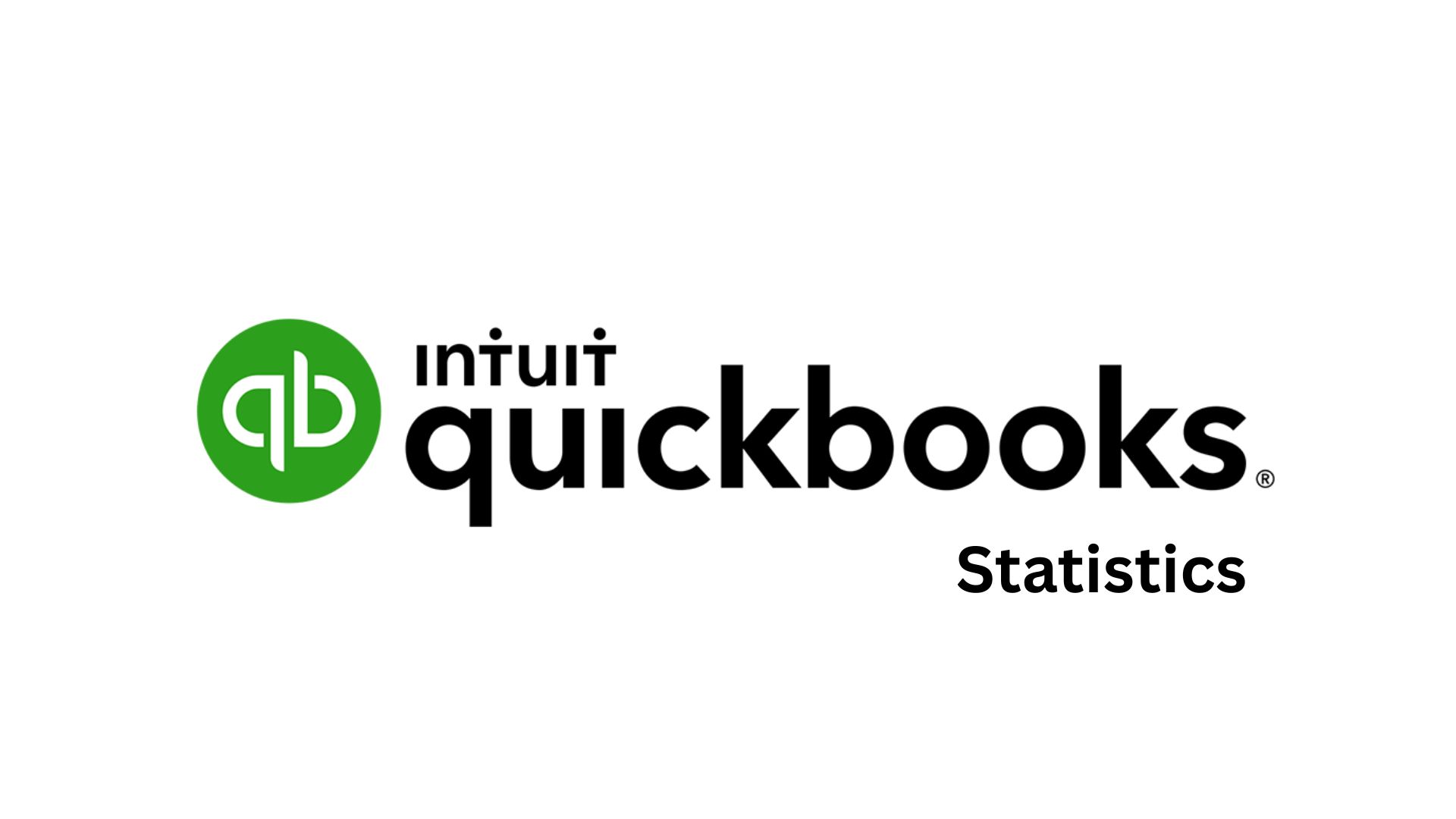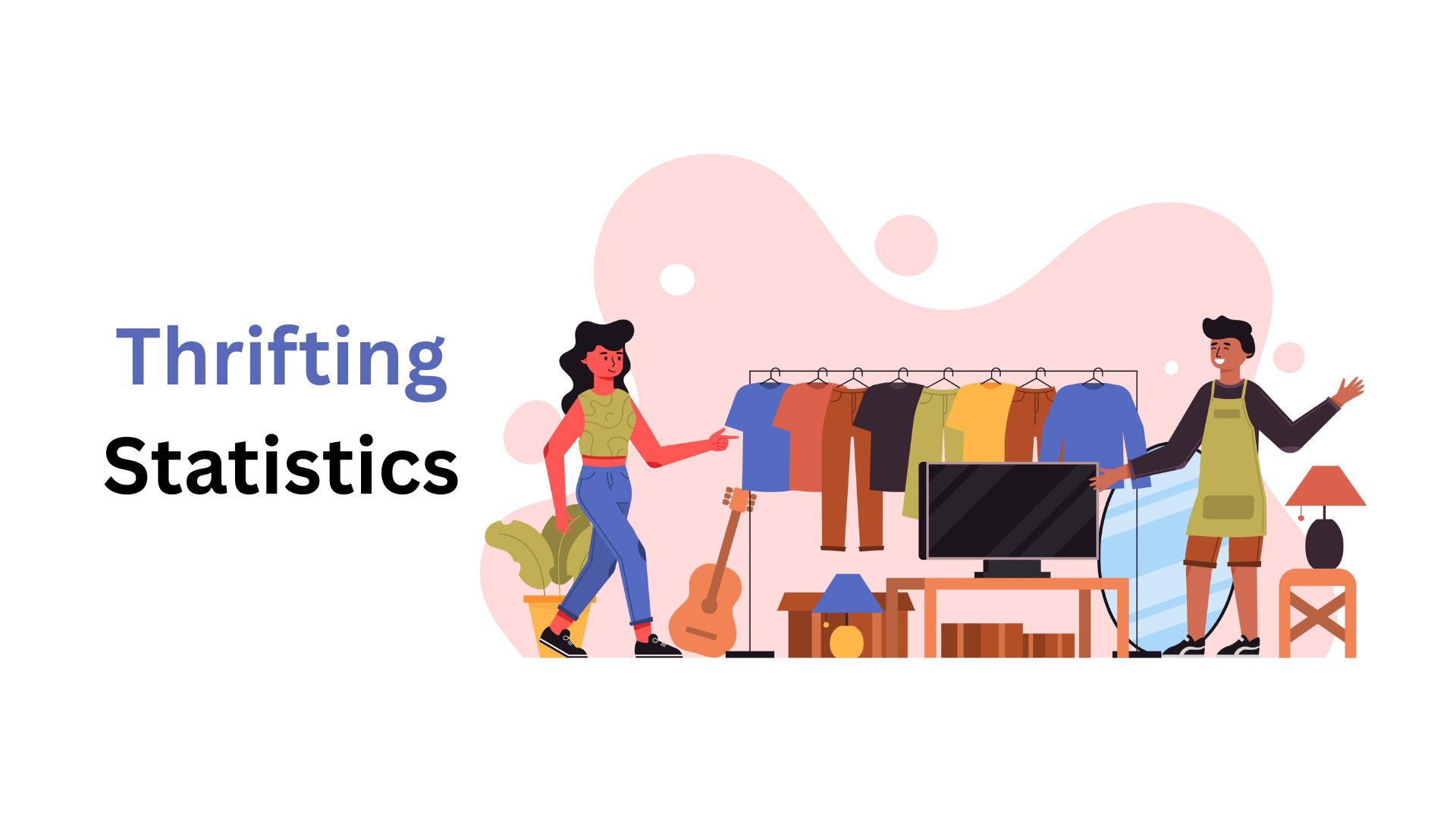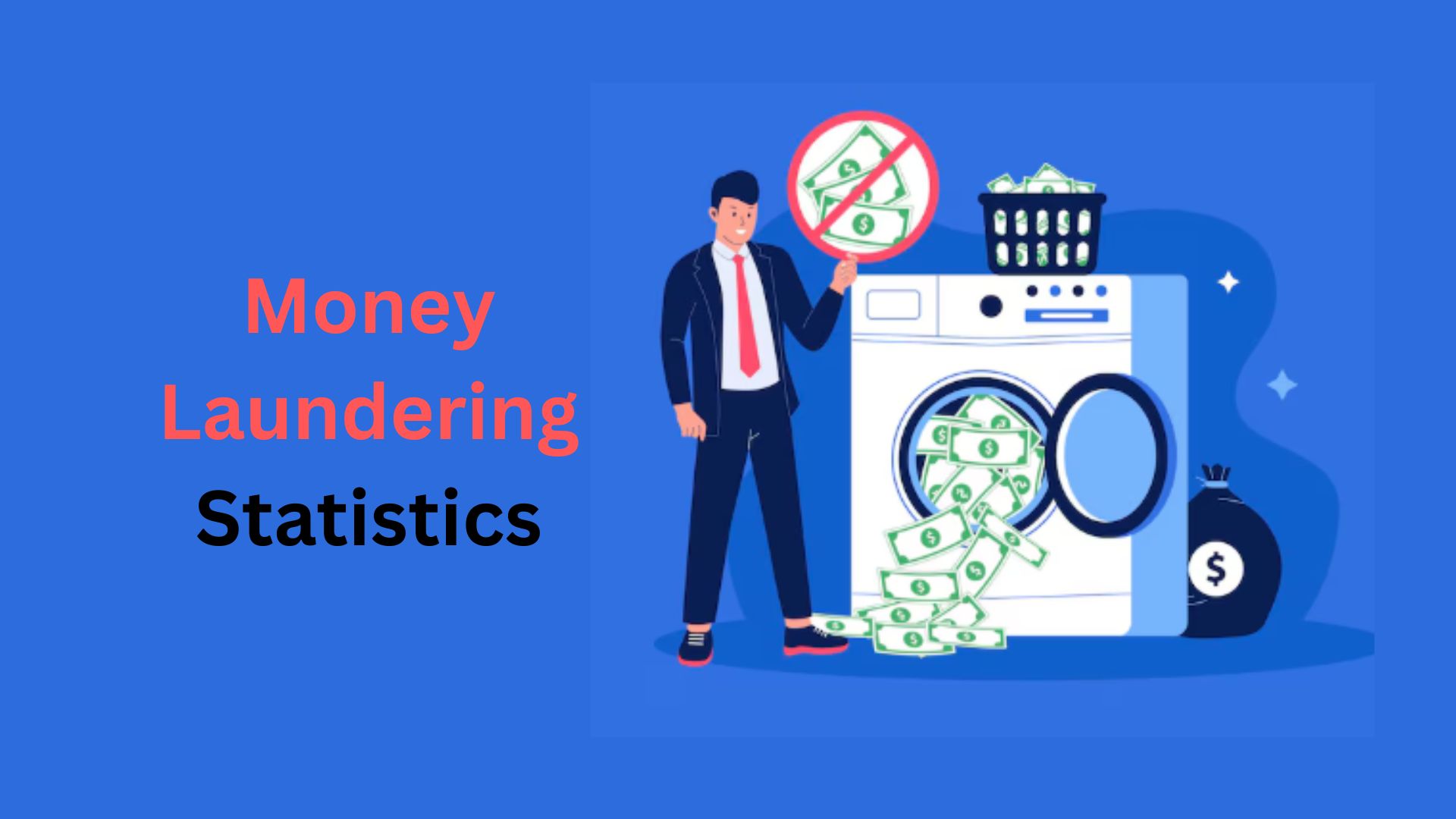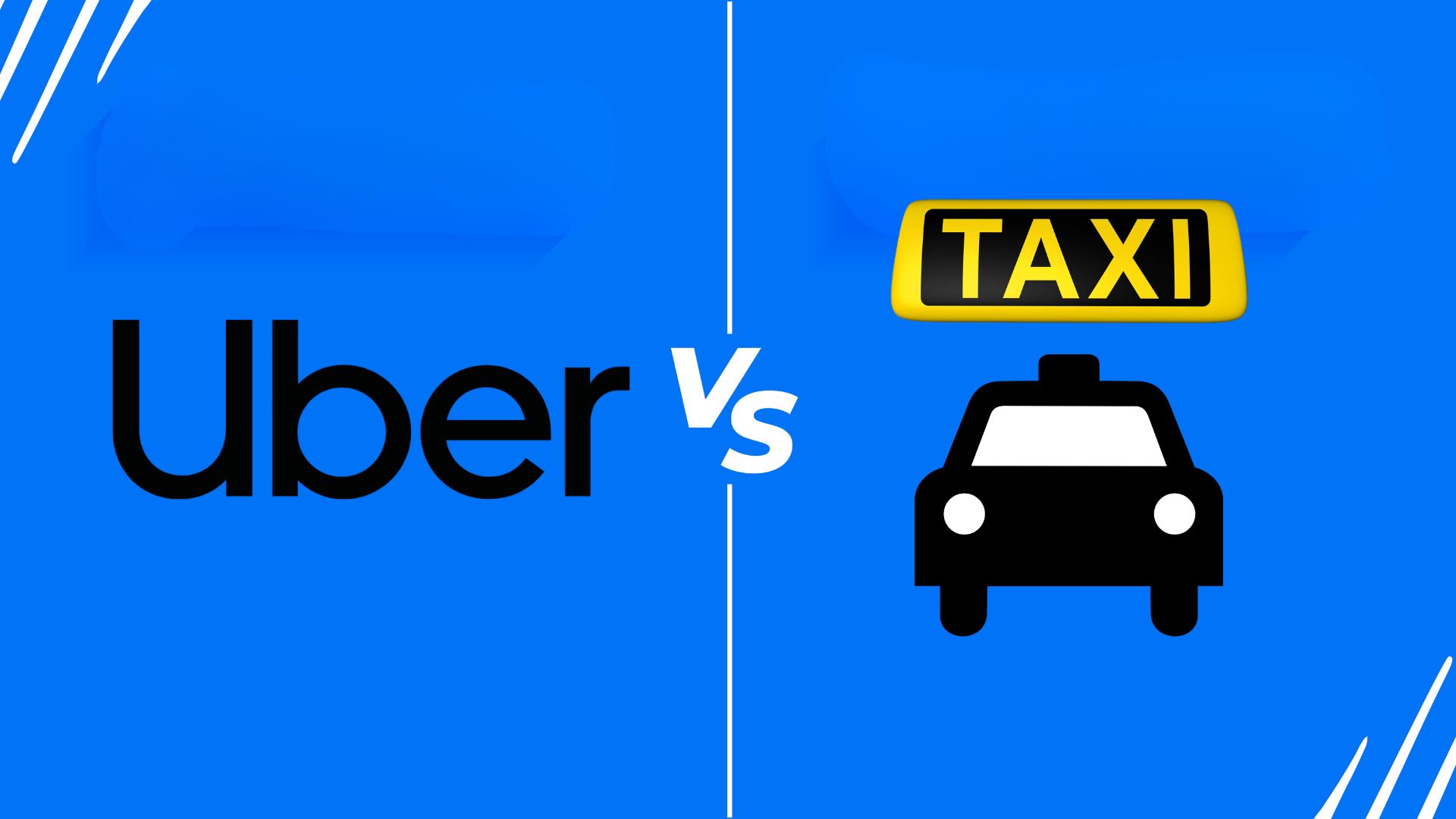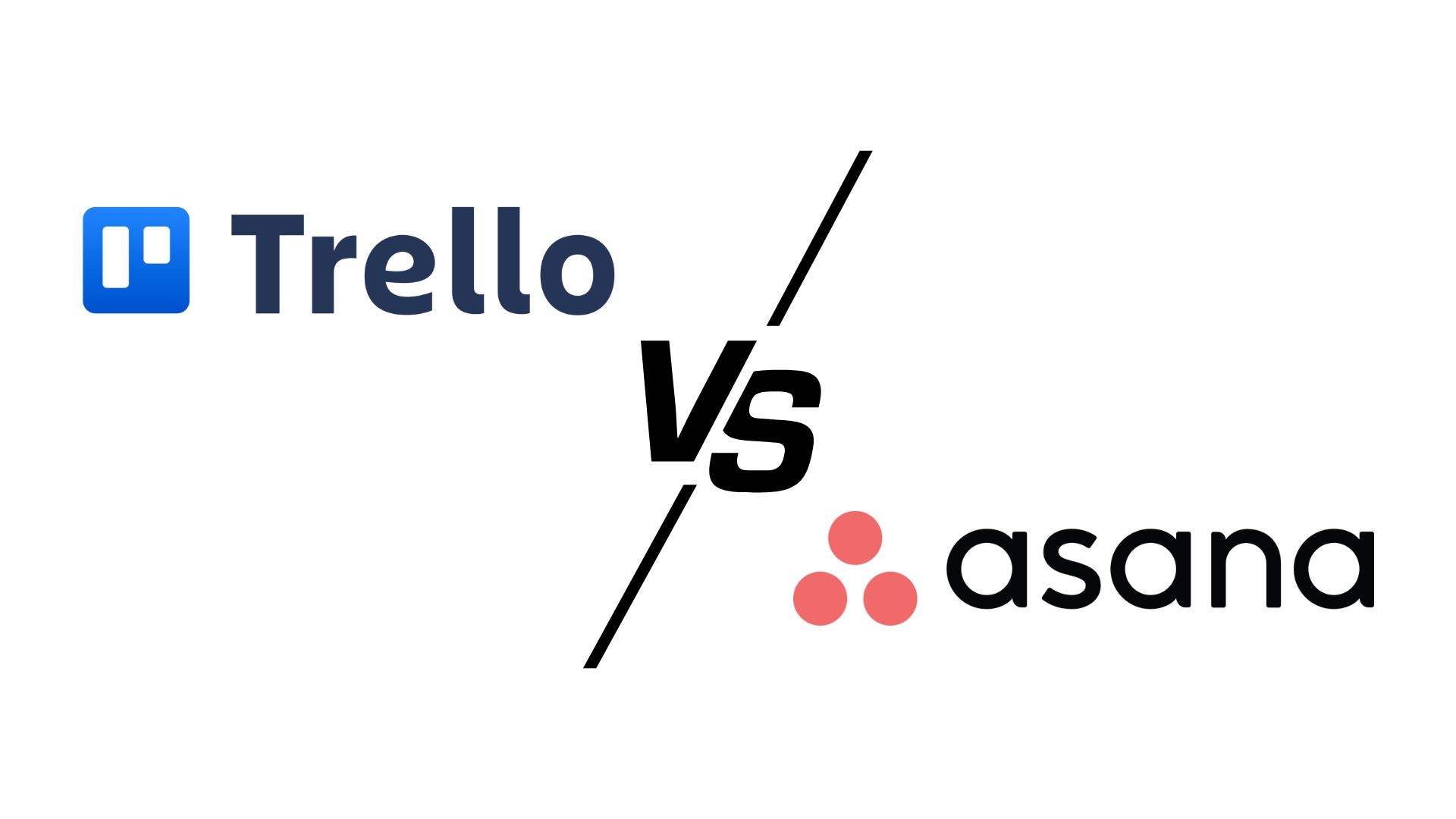Employee Referral Statistics By Average Shares of Hiring’s, Retention, Company And Facts
Updated · Jul 02, 2025

Table of Contents
- Introduction
- Editor’s Choice
- General Employee Referral Statistics
- Facts on Employee Referral Programs
- Advantages of Employee Referrals Statistics
- Employee Referral Programs Statistics
- Employee Referral Statistics By Average Shares of Hirings
- Employee Referral Statistics By Retention
- Incentives for Employee Referral Statistics
- Employee Referral Statistics By Company
- Reasons for Refereing Candidate Statistics
- Quality Of Hires Through Employee Referral Statistics
- Demand Influencing Factors for Employee Referrals Statistics
- Conclusion
Introduction
Employee Referral Statistics: Employee referral is where current employees recommend people they know for job openings. This process is often seen as effective because employees typically suggest candidates they believe fit the company culture and job requirements. Referrals can lead to faster hiring and reduce recruitment costs. Companies often offer rewards or incentives to employees who refer successful candidates.
Overall, employee referral programs help companies find qualified employees quickly while improving employee satisfaction, as people trust their colleagues’ recommendations. This practice has become popular in many industries due to its efficiency and positive results.
Editor’s Choice
- Employee Referral Statistics show that around 17% of all hires in 2024 are made through employee referrals, highlighting its popularity as a recruitment channel.
- Employees hired through referrals have a 45% higher retention rate compared to those hired through traditional channels
- Moreover, positions filled through referrals take an average of 29 days, while other sources take about 39 days, saving valuable hiring time.
- Referrals can reduce hiring costs by up to USD 3,000 per hire, as they require fewer recruitment resources.
- Referred employees tend to perform better and stay longer, often leading to a 15% improvement in overall productivity.
- As of 2024, companies with referral programs report a 10% increase in employee engagement.
Similarly, 80% of companies offer cash bonuses, ranging between USD 500 and 5000, to encourage employee referrals. - Employee Referral Statistics further state that referrals account for 25% of diverse hires in 2024, proving effective for companies seeking a more inclusive workforce.
- By the end of the year, almost 60% of companies report plans to enhance their employee referral programs due to the high quality of hires.
- Organizations with referral programs see a 23% improvement in company culture as employees bring in like-minded candidates.
General Employee Referral Statistics
- In 2024, employee referrals will help fill jobs best, with 30% of referred candidates hired versus 7% from other sources.
- Meanwhile, around 84% of companies rely on employee referral programs to find new workers.
- People hired through referrals are 40% more likely to stay for one year than other hires.
- Similarly, employees who were referred are 18% more likely to feel satisfied with their jobs.
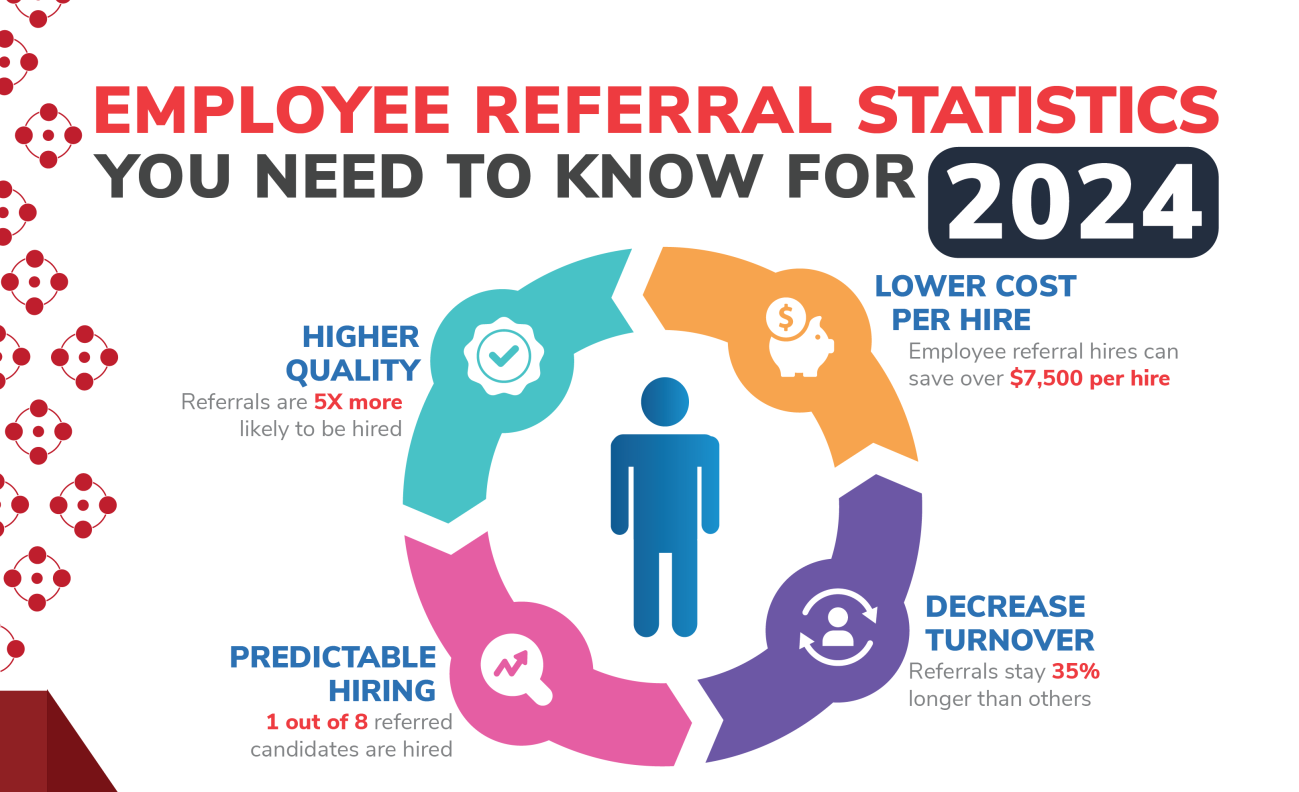
(Source: erinapp.com)
- Employees who come through referrals have a 5 times higher chance of getting hired than others.
- Employee Referral Statistics show that hiring an employee referral saves USD 7,500 in productivity and sourcing costs.
- Around 82% of employees stated that employee referrals are the top choice for the best return on investment.
- Moreover, almost 45% of referred employees stay over 4 years; only 25% from job boards last 2 years.
Facts on Employee Referral Programs
- Today, about 71% of American employers have a program to refer new employees through referrals.
- Employee referrals make up 30 to 50% of all hires in the U.S., helping companies recruit.
- In 2024, referral hires stay longer, with 45% staying over four years, while job board hires are 25%.
- Hiring referrals can help reduce company turnover by as much as 20%.
- In addition, referral hires stay 40% longer, with 46% retention, while job board hires only reach 33%.
- On average, employee referrals take 13 or more days to hire.
- As of 2024, referred candidates are 2.6% to 6.6% more likely to accept a job offer.
- 88% of employers say employee referral programs are the best way to find applicants.
- Besides, employee referrals cost USD 1,000 less per hire.
Advantages of Employee Referrals Statistics
- It requires only 60 days to fill a position without a referral, while referrals take 35 to 40 days.
- Employee Referral Statistics also report that it raises the chances of a job match by 2.6% to 6.6%.
- Only 25% of job board recruits stay over two years, while 45% from referrals stay longer.
- Easy Payment of employee referral charges 20 to 30% of yearly salary, while a referral incentive is only 2 to 3%.
- More than 70% of companies offer USD 1,000 to 5,000 for employees who refer qualified candidates.
Employee Referral Programs Statistics
- Companies with employee referral programs keep 46% of workers, while career site hires stay at 33%.
- New hires from referrals complete training faster in 29 days, compared to 39 to 55 days for others.
- One in three companies will use third-party software to manage their employee referral programs.
- Meanwhile, around 69% of companies give USD 1,000 to 5,000 cash rewards to employees for referring qualified candidates.
- Instead of cash rewards, 15% of companies give extra time off or vacation days.
- According to Employee Referral Statistics, in 2024, Candidates referred by employees are 3 to 4 times more likely to be hired than others.
- In contrast, 75% of companies use employee referral programs with automated or partly automated processes to hire staff.
- Only 41% of referrals come from employees; the rest are from the organization’s external network.
- New hires from referral programs make companies 25% more profit than those from other sources.
- Referral programs help organizations save USD 3,000 or more on each new hire they make.
- In 2024, about 17% of hires come from employee referrals, totaling fewer than 1,000 employees hired this way.
- Furthermore, other hiring shares from employee referrals are 14% (1,001 to 5,000 employees), 12% (5,001 to 10,000 employees), 11% (10K to 50K), and 9% (10K+ employees).
Employee Referral Statistics By Retention
- As of 2024, employee retention improves by 40% when referrals are used.
- Meanwhile, referrals have a 46% retention rate, while online recruits have 33%, saving 41% on hiring costs.
- Referred employees stay in their jobs 70% longer than those who were not referred.
- Moreover, referrals make up 30% of the workforce but help reduce turnover by 6%.
- Referrals have better employee retention; 50% stay for 3 years, while non-referrals quit in 18 months.
- Hiring employees through recommendations can reduce worker turnover by up to 20%.
Incentives for Employee Referral Statistics
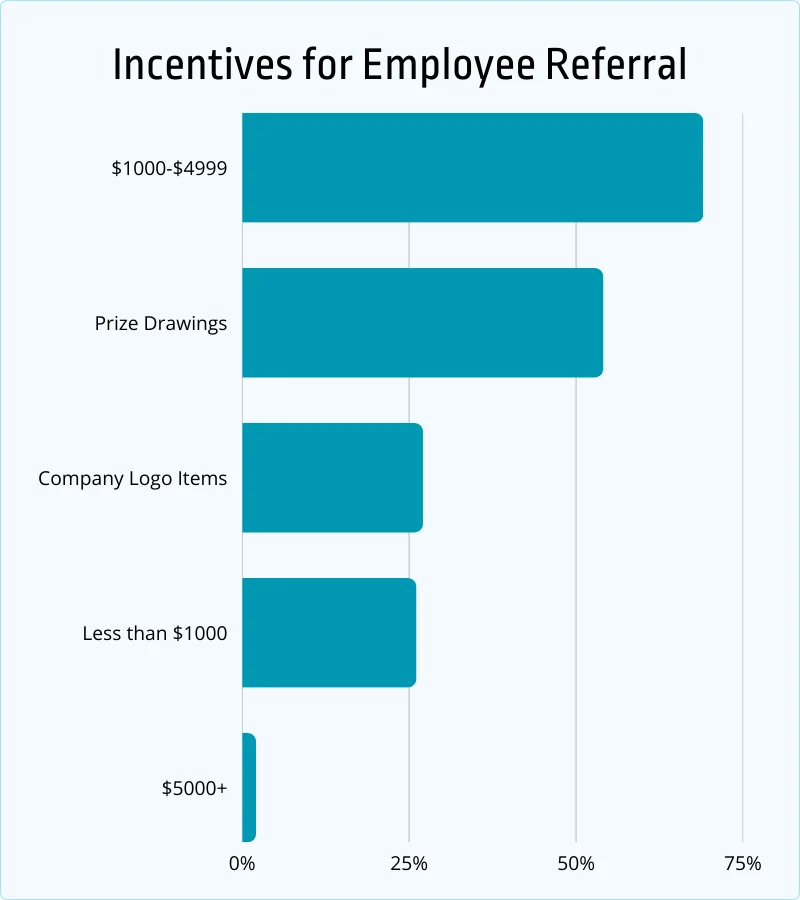
(Source: jobera.com)
- Employee referral statistics report that about 69% of employers give referral bonuses of up to USD 5000 in cash to their employees.
- Almost 26% of referral bonuses usually range from USD 1,000 to 4,900, followed by 2% (USD 5000+)
- These include promotional items such as prize drawings (54%), company logo items (27%), and vacation days (15%).
Employee Referral Statistics By Company
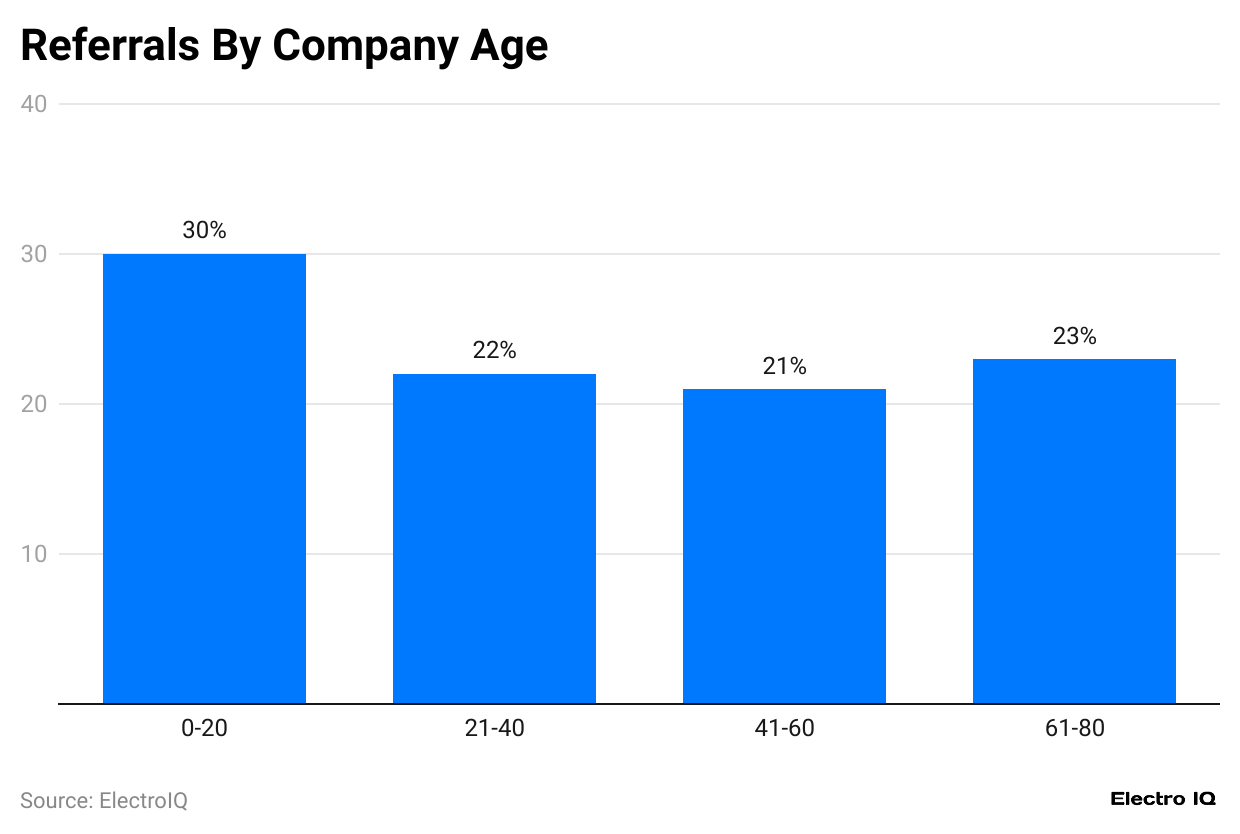
(Reference: shortpixel.ai)
- Employee referral statistics show that businesses under 20 years old hire about 30% of their staff through referrals.
- In 2024, businesses that have been around for 21 to 40 years hire about 22% of their staff.
- Furthermore, other company ages by referral shares are 41 to 60 (21%) and 61 to 80 (23%).
By Frequency
- Employee Referral Statistics show that referrals make up 45% of internal hires.
- For 500 hires, 225 come through referrals, while only 7% of applicants are referred.
- In 2022, referrals were 7% of job applicants in the U.S., but they made up 30% to 50% of hires.
- The chance of success for a referral applicant is 28.5%, while it’s only 2.7% without a referral.
- Booz Allen Hamilton is a consulting company, and 55% of its employees joined through referrals.
By Age Group
- Employee Referral Statistics in 2024 elaborates that employee referrals account for 30 to 50% of all new hires in the U.S.
- Based on age group, the share of hires obtained through employee referrals is elaborated below:
| Age (years) | Share of hires from employee referrals |
| 25 to 34 | 35% |
| 18 to24 | 30% |
| 35 to 44 | 25% |
| 45 to 54 | 15% |
| 55+ | 10% |
Reasons for Refereing Candidate Statistics
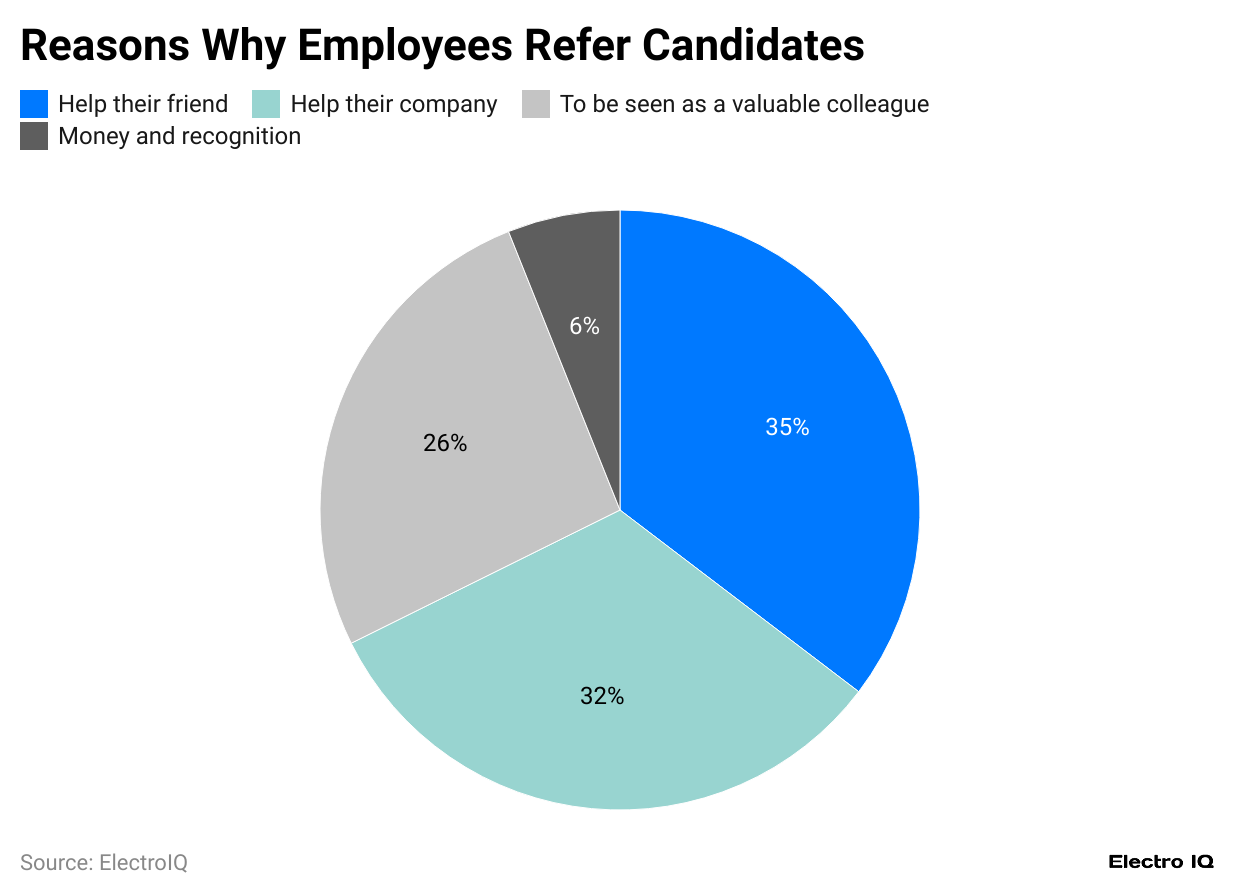
(Reference: shortpixel.ai)
- As per Employee Referral Statistics in 2024, nearly 35% refer candidates to help their friends
- Furthermore, 32% do it to support their companies, and 26% want respect from coworkers.
- In addition, only 6% do it just for money or recognition.
Quality Of Hires Through Employee Referral Statistics
- Referred candidates are five times more likely to be hired compared to those from other sources.
- Employees hired through referrals have a 46% retention rate after one year, compared to 33% for those hired via job boards.
- In 2024, referral hires exhibit a 33% increase in job performance compared to non-referral hires.
- Companies save an average of USD 3,000 per hire when utilizing employee referral programs.
Demand Influencing Factors for Employee Referrals Statistics
- Return on Investment (ROI): 88% of employers rate employee referrals above all other sources for ROI.
- Quality of Hires: Employee referrals have a 25% higher retention rate after one year compared to hires from other sources.
- Cost Efficiency: Companies with referral programs save an average of USD 2,000 per hire due to reduced recruiting time and resources.
- Time-to-Hire: Employee referral programs can reduce time-to-hire by as much as 33%.
- Employee Engagement and Satisfaction: Employee referral programs can increase retention rates by 82%.
- Cultural Fit: 70% of employers believe that referrals are the best source for quality hires.
- Incentive Structures: 69% of employers have an employee referral program.
Conclusion
Employee referral programs are an effective way for global companies to find new talents. Employees can recommend friends or family members for open positions, often leading to better candidates. These referrals help businesses save time and money on hiring. Employees feel more connected to the company when they bring in new team members.
Overall, employee referral programs boost recruitment, improve employee morale, and help organizations hire skilled and trusted individuals for various roles.
FAQ.
Employee referrals are important because they help find trusted candidates, reduce hiring time, and improve employee retention.
Employees who refer someone may receive rewards like bonuses, gift cards, extra vacation days, or recognition in the workplace.
Yes, employee referrals increase the chances of getting hired, as employers trust recommendations from current employees more.

Joseph D'Souza founded ElectroIQ in 2010 as a personal project to share his insights and experiences with tech gadgets. Over time, it has grown into a well-regarded tech blog, known for its in-depth technology trends, smartphone reviews and app-related statistics.

